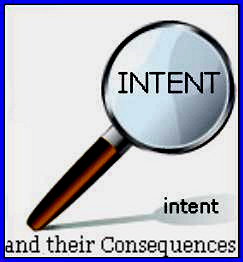
Re Clarke Estate 2023 BCSC 103 is the latest in many S. 58 WESA applications where the court has “cured” a defective will once satisfied that the document is authentic and that it represents the final testamentary intentions of the deceased at the material time.
One of the leading BC cases Estate of Young, 2015 BCSC 182. stated that the two principal issues are:
(1) whether the document is authentic; and
(2) the core issue, whether the document represents the fixed and final, although not irrevocable, testamentary intentions of the deceased at the material time.
The BC courts followed the Manitoba decision of George v Daily the court confirmed that testamentary intention means much more than the expression of how a person would like his or her property to be disposed of after death. The key question is whether the document records a deliberate or fixed and final expression of intention as to the disposal of the deceased’s property on death. A deliberate or fixed and final intention is not the equivalent of an irrevocable intention, given that a will, by its nature, is revocable until the death of its maker. Rather, the intention must be fixed and final at the material time, which will vary depending on the circumstances.
The burden of proof that a non-compliant document embodies the deceased’s testamentary intentions is a balance of probabilities.
A wide range of factors may be relevant to establishing their existence in a particular case. Although context specific, these factors may include the presence of the deceased’s signature, the deceased’s handwriting, witness signatures, revocation of previous wills, funeral arrangements, specific bequests and the title of the document:
While imperfect or even non-compliance with formal testamentary requirements may be overcome by application of a sufficiently broad curative provision, the further a document departs from the formal requirements the harder it may be for the court to find it embodies the deceased’s testamentary intention: George at para. 81.
Concerning the material time for determining the testamentary intentions of the deceased person, Dickson J. noted at para. 37 that in most cases, the material time for determining testamentary intentions on a s. 58 application is the time when the document in question was created.
In many cases, as here, the material time for determining testamentary intentions on a s. 58 application is the time when the document in question was created. However, as noted in Estate of Young, depending on the circumstances, the material time may vary on this key issue. For example, after creating a document, a will-maker may, by words or actions, manifest a fixed and final intention that it expresses how his or her property is to be disposed of on death and thus that it operates as a will. In other words, a document may acquire a testamentary character by subsequent and sufficient manifestation of the will-maker’s intention: Bennett et al. v. Toronto General Trusts Corporation, 1958 CanLII 49 (SCC), [1958] S.C.R. 392 at 397. Nevertheless, in most cases, the focus of inquiry will be the will-maker’s intention when the document was prepared and executed: see, for example, Sweeney Cunningham Estate v. Sweeney, 2013 NSSC 299 at para. 29; Komonen v. Fong, 2011 NSSC 315 at para. 23.
The principles from Estate of Young were applied in the cases of Smith Estate (Re), 2016 BCSC 350 and Lane Estate, 2015 BCSC 2162
From the foregoing authorities, the following principles are established :
- a)The onus in this matter is on the petitioner to prove, on a balance of probabilities, that:
- the document is authentic; and
- the document embodies the fixed and final, as opposed to irrevocable, testamentary intentions of the deceased.
- b)The factors to take into account in determining whether the document contains the testamentary intentions of the deceased include:
- the presence of the deceased’s signature,
- the deceased’s handwriting,
iii. witness signatures,
- revocation of previous wills,
- funeral arrangements,
- specific bequests,
vii. the title of the documentation,
viii. such other factors as may be relevant given the context, and
- c)the material time for determining the testamentary intentions can vary depending on the circumstances, but in many if not most cases the material time is when the document was prepared and executed.




